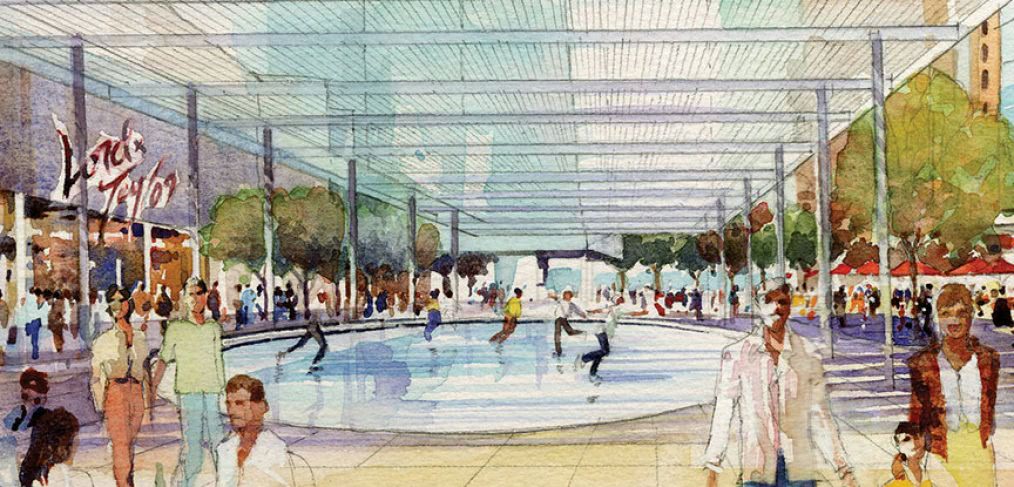
The Future of Cars is Driving the Future of Retail
CallisonRTKL’s Yogesh Seth discusses the rise of the Mall of the Future and the fall of cars.
We don’t love our cars anymore—or at least, not much. Vintage cars, drive-in theaters and Americans’ unhealthy obsession with their automobiles are all fading into the background as nostalgic relics of the past. As the next generation’s desire for mobility and multimodal transportation grows, so too does the design for the Mall of the Future.
Changing Transit Tunes
The proclamation of the end of the American love affair for automobiles is a bold one. But let’s look at the facts.
In 2014, U.S. riders took 10.8 billion trips on public transit—the highest ridership in 58 years. Compared to U.S. adults, millennials are more likely to travel by bus or to bike, and they’re also more likely to carpool. And since young people tend to be thriftier, they’re more likely to live in cities, be more traffic-averse and be more conscious of the environmental impact of driving. Therefore, cars are increasingly unable to meet their transit needs.
Instead, millennials are multimodal transit users; a colorful combination of buses, trains, bikes and walking gets them to where they want to go. Moreover, people today want to be more involved in urban life. A growing desire for walkability and proximity replaces what was once an affection for suburban isolation.
The verdict is clear: Cars are out and public transit is in, and its use is going nowhere but up. Far removed from the drive-in culture of the past, today’s consumers are accepting other forms of transit as a central part of the fabric of urban life.
Setting Up Shop
As the next generation embraces these varied transit types, retail needs to reflect transit’s new role. Innovative malls will function as transportation hubs and transportation hubs will function as innovative malls.
Take Tysons Corner, a retail-oriented metro transit stop in McLean, Virginia—on Black Friday, the number of visitor trips to the stop nearly doubled compared to the stop’s opening day. The success of the transit-oriented destination has lifted nearby rental properties, and once the Silver Line connects Tysons to Dulles International Airport in 2018, the stop could see even more visitors.
With thousands of eyeballs and footfalls daily, subway stations are prime retail locators. The traffic among subway stations in cities like Shanghai, Hong Kong and London proves the potential for success when retail and dining experiences meet major public transit connectors.
Click & Collect
The Mall of the Future will also adapt to changing trends created by consumer-centered digital megastores. The exponential rise of online shopping—complete with at-home delivery—ushered in by companies like Amazon presents a major evolution in consumer retail behavior. With online delivery competitors, retail centers can no longer be purely shopping destinations; they need to adapt to be experiential, encompassing dining, entertainment and tourist attractions.
A New Type of Parking
Just as rapidly changing technology will create smarter delivery methods, it will also foster more sophisticated infrastructure. In retail, the advent of smart parking will allow the mall’s system to automatically park driverless cars at the touch of a cell phone. The sophisticated technology of a robotic parking garage in Sunny Isles Beach, Florida uses radio-frequency identification (RFID) tags to direct the delivery of cars.
The groundbreaking realization from this technology is that the mall of the future will too incorporate the parking garage of the future. The shopping center experience of the future doesn’t begin when a shopper enters a store; it starts from when a consumer drives up to a retail center.
Smartphones or autonomous in-car meters can lead parking lot navigation and transactions. Carousel-parking garages can store cars in tall, narrow stacks in remote areas. Such infrastructure frees up public space and increases the value of land otherwise designated for parking. In due time, these changes also mean that city regulations will adapt to reducing parking demands. Smart Park allows drivers to be closer than ever to the shopping center’s front door. It’s not hard to imagine a time when autopilot cars can drop off consumers at the front of the mall and then go park itself.
The future is coming. So, get ready for transit stops turned retail centers, robotic parking garages and smarter masterpieces of form and function.
